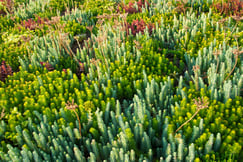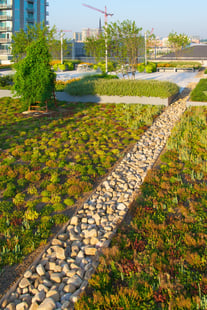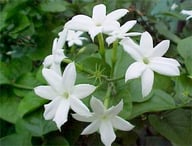Xeri. Comes from the Greek “xeros”, meaning dry
Scape. A scene; a view
Xeriscaping, the practice of landscape design with slow-growing, drought tolerant plants, conserves water, reduces debris and waste, reduces the need for fertilizers and requires very little maintenance.

So why doesn’t everyone do it? In today’s modern era of high-tech irrigation systems and progressive fertilizers, landscapes are able to depend on large amounts of water, high levels of maintenance, and growth-stimulating fertilizers. But some of the Southeast's recent drought conditions have created an urgency to take a step back and incorporate landscapes that adapt to drought tolerant conditions. It’s not only adaptive to our environmental conditions, it can also look beautiful when it’s done properly. Below are three important steps on the best way to start your xeriscape!
 Designing Properly
Designing Properly
The most important factor in xeriscaping is to have the right plant material in place. Whether you’re putting together a new landscape or giving an old landscape a facelift, a proper design is vital in making sure your landscape will look amazing while conserving resources. Here are some great steps for designing your xeriscape:
-Look at what’s currently growing in the location your looking to xeriscape. Existing vegetation gives you a hint as to the types of plant material that will grow well.
-Think of your new xeriscape as a set of three different zones; a high water-use zone, a moderate water-use zone, and a low water-use zone. A high water-use zone should be very small (no more than 10% of the area) in a high visibility area. This zone should be watered as needed. A moderate water-use zone is larger (30% of the area) and is only watered when plant material seems stressed or wilted. A low water-use zone (60% of the area) would only include plant material that needs to be initially watered in. This type of design is efficient, practical, and easily maintained.
It’s all about the Soil
This is the not-so-fun part of your xeriscaping endeavor. Get your soil tested. We know, we know; it’s kind of like asking you to floss your teeth, but we’re telling you, it’s vital in making sure you’re putting the right plants in the right place. By knowing your soil’s strengths and weaknesses, you’ll know exactly what kind of amendments may be needed for healthy growth. Always make sure to slope beds away from buildings; it’s also best to plant drought-tolerant plants at the higher part of the slope, and plants that need a lot of water at low elevations, or the bottom of the slope.
Picking the Right Plants
Good plant choices for your xeriscape can be derived from the native landscape, but remember, just because it’s native doesn’t mean it will adapt well to your local environment or microclimate. Choose plants that will adapt to the environment you’ve created. Also choose plants that have slower growth rates, that will mature with the rest of your landscape, that have textures and colors that compliment the surrounding area, and of course, pick functional plants. Below are some great plant choices, depending on your micro-climate, to make your xeriscape beautiful, efficient, functional and low maintenance:
 Creeping Gardenia, Indian Hawthorne, Southern Indian Azalea, Camellia, Cleyera, Trident Maple, Red Maple, Live Oak, Climbing Fig, Confederate, Jasmine, Creeping Juniper, Pampas Grass, Abelia, Semi-Japanese Boxwood, Impatiens, Sweet Alyssum
Creeping Gardenia, Indian Hawthorne, Southern Indian Azalea, Camellia, Cleyera, Trident Maple, Red Maple, Live Oak, Climbing Fig, Confederate, Jasmine, Creeping Juniper, Pampas Grass, Abelia, Semi-Japanese Boxwood, Impatiens, Sweet Alyssum
These 3 steps are just a start to learning the art of xeriscaping. If you’re looking to learn more about great plants to use when xeriscaping, learn about how to create awesome xeriscape designs, or want to become a xeriscaping expert, a great resource is Xeriscape, A Guide to Developing a Water-Wise Landscape from the University of Georgia’s (UGA) College of Agricultural Environmental Sciences. Another great source is Make Every Drop Count—Seven Steps to a Water-Wise Landscape from UGA’s College of Agricultural and Environmental Sciences.
This xeriscape guide was created using Xeriscape, A Guide to Developing a Water-Wise Landscape, Cooperative Extension, UGA College of Agricultural and Environmental Sciences and UGA College of Agricultural and Environmental Sciences Make Every Drop Count—Seven Steps to a Water-Wise Landscape.


